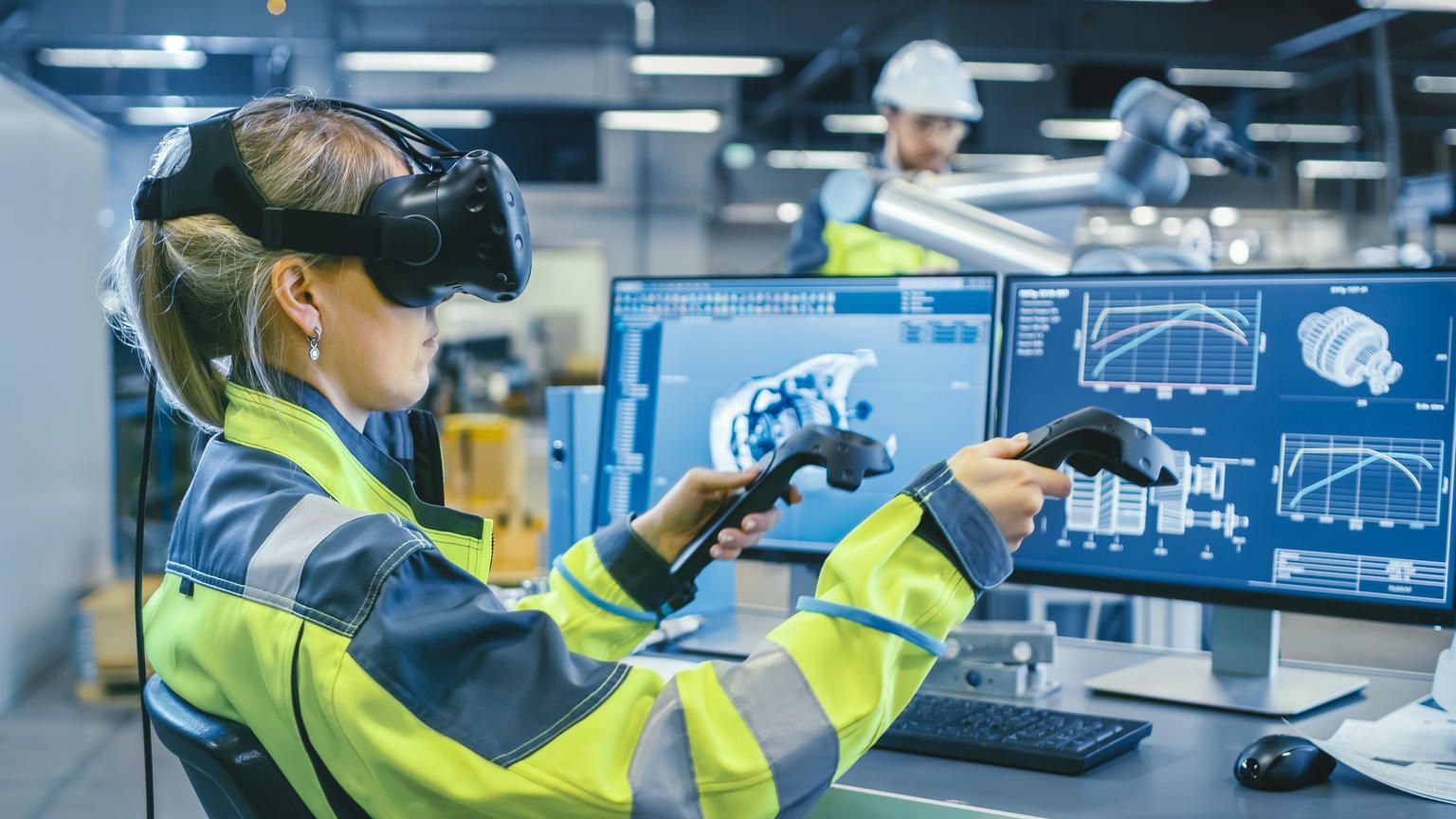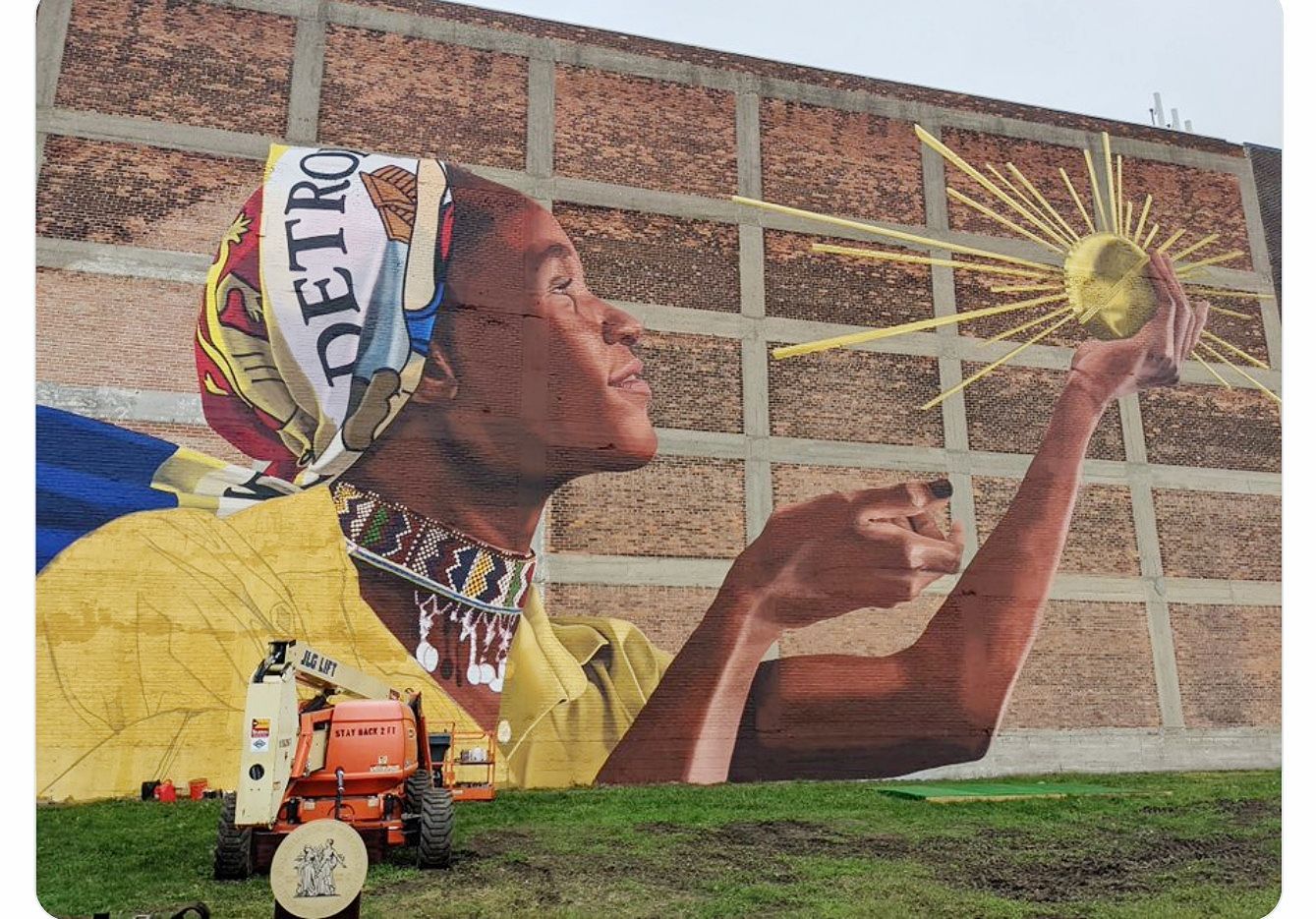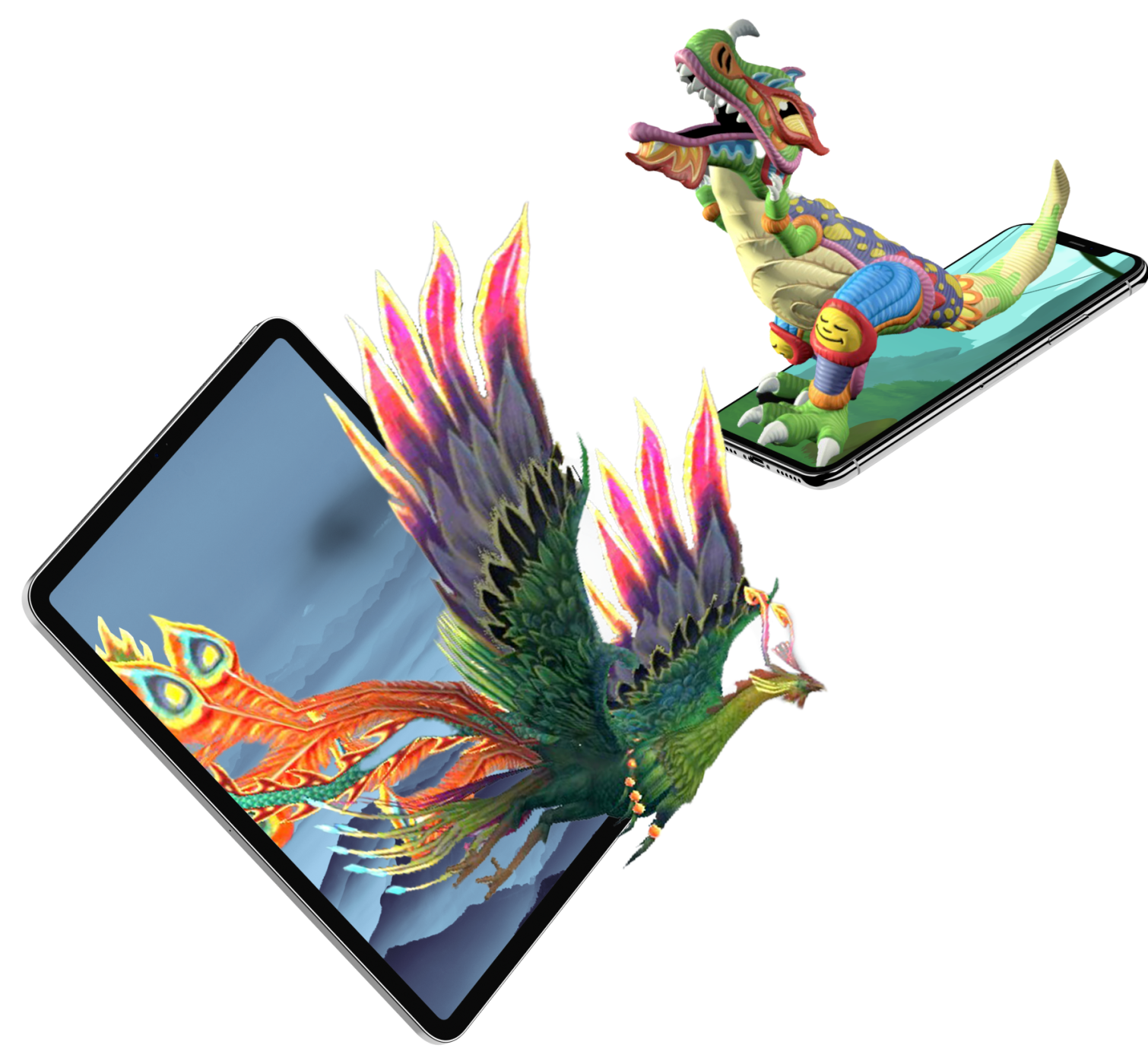Immersive Learning and Training Using Augmented and Virtual Reality
Introduction
Augmented Reality (AR) and Virtual Reality (VR) have taken center stage in recent years as two of the most exciting technologies shaping the future of learning and training. By blending physical environments with interactive digital elements, AR and VR provide immersive experiences far beyond traditional classroom settings or online courses. Instead of merely reading text or watching slideshows, learners can engage with virtual or augmented worlds that respond to their actions in real time. The result is a deeply memorable, hands-on environment that bolsters knowledge retention and boosts overall skill development.
Immersive learning using AR and VR holds enormous potential across a wide range of sectors, from healthcare and manufacturing to engineering, retail, and even art and design. With the cost of AR and VR hardware becoming more affordable, businesses of all sizes can incorporate these tools into training programs and educational curricula. Companies can effectively simulate real-life work environments, allowing employees to practice their skills under realistic conditions without incurring the safety risks, travel expenses, or production downtime typically associated with traditional hands-on training.
This article explores the many immersive learning and training aspects that leverage Augmented Reality and Virtual Reality. We will examine what immersive learning entails, the fundamental differences between AR and VR, and how these technologies can be integrated into existing programs to enhance engagement, improve performance, and streamline the path from novice to expert. In addition, we will look at the practical benefits of using AR and VR, discuss potential challenges, and provide a glimpse into the future of immersive learning systems.
By the end of this comprehensive guide, you will have a clear understanding of why AR and VR have emerged as critical tools in modern education and workforce development. Whether you are a training manager, educator, policy maker, or simply curious about the evolution of learning technology, this article will equip you with the knowledge to make informed decisions about implementing immersive learning solutions in your organization or educational institution.
What Is Immersive Learning?
Immersive learning is an innovative approach to education and training that leverages technology to create deeply engaging and interactive experiences for learners. Instead of passively learning through text, images, or lectures, immersive learning integrates learners directly into realistic environments—physically, virtually, or a combination of both. This learning modality helps participants develop practical skills, critical thinking abilities, and contextual understanding by allowing them to interact with digital objects, virtual simulations, and augmented overlays that reflect real-world scenarios.
Key Characteristics of Immersive Learning
- Engagement: Immersive learning environments capture learners’ attention more effectively than traditional methods. By allowing students or trainees to interact within simulated conditions, immersion encourages active participation and maintains high levels of focus.
- Realism: Immersive learning replicates real-world scenarios as closely as possible. Whether using AR to overlay digital elements onto physical machinery or VR to fully transport learners to a simulated workplace, the goal is to mimic reality in a controlled environment.
- Interactivity: Immersive learning goes beyond reading or listening; users can manipulate virtual objects and receive immediate feedback based on their actions. This interactivity enables deeper comprehension since learners get to “learn by doing” rather than simply observing.
- Adaptive Learning Paths: With the data-capturing capabilities of immersive technologies, learning experiences can be personalized. Learners receive prompts, hints, and challenges that dynamically adjust to their performance level, addressing gaps and reinforcing strengths in real time.
Why Immersive Learning Matters
In our digital age, individuals are inundated with information from various sources, making it increasingly challenging to capture and hold attention. Immersive learning addresses this issue by creating an engaging environment that naturally compels learners to stay focused. Moreover, it offers hands-on practice in settings that may otherwise be risky, expensive, or logistically difficult to replicate. This practicality is particularly crucial in fields such as healthcare, where mistakes can cost lives, and in industrial operations, where even small errors can lead to substantial financial losses.
By bridging the gap between theory and practice, immersive learning prepares individuals to tackle real-world tasks confidently. It also allows businesses and educational institutions to track learner progress more effectively, leveraging analytics to refine training programs. Consequently, immersive learning boosts both the speed and quality of skill acquisition—a win-win for all stakeholders involved.
Understanding Augmented Reality (AR)
Augmented Reality (AR) overlays digital content onto the physical world, creating a composite view that blends real and virtual elements. Unlike Virtual Reality, which fully immerses users in a digitally created environment, AR users can still see and interact with their immediate physical surroundings. This technology typically uses smartphone apps, smart glasses, or headsets that project computer-generated images, text, or 3D models onto real-world objects.
How AR Works
AR relies on advanced computer vision and image processing algorithms to detect and track objects in the user’s environment. Cameras capture live video streams that are analyzed in real time, enabling the AR system to identify surfaces, shapes, and movements. The AR application superimposes the corresponding digital information when certain patterns or markers are detected. In markerless AR, position and orientation are determined through more sophisticated algorithms, enabling the seamless integration of virtual objects into any setting.
Benefits of Using AR in Training
- Contextual Learning: AR delivers information precisely when and where it is needed. For instance, a technician repairing complex machinery could see step-by-step instructions overlaid directly onto the machine parts.
- Cost Reduction: Some training programs involve expensive equipment, travel costs, or potential damage to real objects. AR replaces or reduces the need for these overheads, making practical training more cost-effective.
- Scalability: AR applications can be deployed on many people's mobile devices. This lowers the barrier to entry and allows wide-scale adoption without significant infrastructure changes.
- Enhanced Collaboration: AR tools can facilitate remote collaboration, enabling experts in different locations to see a live view of a trainee’s environment and provide real-time guidance.
Examples of AR in Learning and Development
- Medical Training: Medical students can use AR to visualize patient anatomy or practice complex procedures without risk to actual patients.
- Manufacturing: AR headsets provide assembly line workers with on-the-spot instructions, reducing errors and increasing efficiency.
- Retail: Sales associates practice customer interactions while visualizing product information and inventory data overlaid onto store shelves.
- Field Service: Field technicians use AR to troubleshoot equipment, receive guidance from remote experts, and reduce repair times.
AR proves particularly beneficial in scenarios where real-world context is essential. By layering digital insights onto the physical environment, AR empowers learners to bridge theory and practice swiftly, translating to quicker adaptation and better on-the-job performance.
Understanding Virtual Reality (VR)
Virtual Reality (VR) immerses users in fully digital environments, cutting them off from their immediate physical surroundings. By wearing VR headsets and sometimes using haptic controllers or gloves, learners can explore and interact with a computer-generated world that simulates real-life or entirely fantastical situations. This level of immersion offers a powerful training tool—users can repeatedly practice tasks in a zero-risk environment, refining their skills until they are proficient in the real world.
How VR Works
VR relies on specialized headsets (e.g., Oculus Quest, HTC Vive, Valve Index) equipped with sensors to track head and sometimes body movements. These sensors feed motion data into the VR software, adjusting the displayed images to match the user’s viewpoint in real time. Handheld controllers or motion-sensing gloves track hand movements, enabling object manipulation within the virtual space. Advanced VR systems also integrate haptic feedback, using vibrations or resistance to simulate tactile sensations.
Benefits of Using VR in Training
- Full Immersion: VR can foster intense focus and better knowledge retention by removing external distractions. Learners experience a sense of presence that is difficult to replicate in traditional learning environments.
- Realistic Simulation of Risky Situations: VR is highly effective for training in high-risk scenarios, such as firefighting, military exercises, or emergency medical procedures. Trainees can make mistakes without endangering themselves or others.
- Detailed Feedback and Analytics: VR systems can capture detailed data about user interactions, from reaction times to decision-making processes. This data is valuable for trainers seeking to tailor their instructions and measure progress accurately.
- Scalable and Consistent: With VR, training can be standardized and delivered to multiple users regardless of location. Updates and improvements to the training modules can be deployed swiftly.
Examples of VR in Learning and Development
- Healthcare: Medical trainees can practice surgeries in a highly realistic virtual operating room, perfecting their technique before performing on actual patients.
- Aviation: Pilots gain flight experience in VR simulators, learning to handle complex maneuvers and emergency procedures without putting real planes at risk.
- Construction: Construction workers can explore 3D models of a site before building begins, spotting design issues or safety hazards early on.
- Corporate Training: Companies use VR to onboard new employees, teach soft skills such as negotiation, and offer practice in public speaking or conflict resolution scenarios.
The strength of VR lies in its ability to replicate real-world conditions with an unmatched level of immersion. Whether practicing a delicate surgical procedure or learning to operate heavy machinery, VR allows learners to gain skills and confidence in a safe, controlled environment.
Advantages of AR and VR for Training
Augmented Reality and Virtual Reality each bring unique strengths to the learning process. When combined or used appropriately, they can transform tedious, theory-heavy lessons into engaging, hands-on experiences that drive better outcomes.
- Enhanced Engagement and Motivation
Traditional lecture-based training often struggles to keep learners’ attention. AR and VR, on the other hand, create immersive environments that naturally encourage exploration and active participation. The heightened sense of presence typically increases motivation, making learners more eager to practice, improve, and master the material. - Improved Knowledge Retention
Research shows that learning by doing significantly improves retention rates compared to passive learning methods. AR and VR allow students to apply new knowledge in real-time scenarios. This experiential learning approach helps them recall and apply information more effectively in real-world contexts. - Personalized Learning Experiences
Both AR and VR can record learner performance, enabling adaptive learning paths. This personalization ensures that users can move at their own pace, focus on areas that need improvement, and bypass content they’ve already mastered. The result is a more efficient and targeted learning journey. - Reduced Risk and Cost
Many industries face the challenge of training employees for dangerous or high-stakes situations. AR and VR simulations remove the associated risks and expenses, allowing repeated practice without exposing learners to real harm or incurring hefty resource costs. Furthermore, mistakes made in a simulated environment are valuable learning experiences that do not carry real-world consequences. - Scalable Deployment
With AR and VR, training modules can be replicated without geography or classroom capacity limitations. In a remote or global environment, new employees or students can receive the same quality of training regardless of location. This consistency is particularly beneficial for large corporations with offices across different regions. - Data-Driven Insights
Immersive technologies can capture highly detailed data about learner behavior, including reaction times, decision choices, error rates, and progress over time. Instructors and managers can analyze this data to refine the training curriculum, tailor feedback, and offer targeted interventions that speed up the learning process.
Practical Use Cases Across Industries
Immersive learning is not limited to a single field; it has wide-ranging applications in various sectors. Below are some of the most prominent industries leveraging AR and VR to enhance training:
- Healthcare and Medicine
Surgeons practice complex procedures in VR simulators, reducing the time needed for live mentorship while improving patient outcomes. Nurses and paramedics can simulate emergency scenarios, gaining confidence in responding to crises without risking real lives. - Manufacturing and Industry
Factory workers use AR headsets to see assembly instructions, detect defects, and monitor real-time metrics, reducing errors and downtime. VR can simulate industrial equipment operation for advanced troubleshooting, giving employees practical experience without halting production lines. - Military and Defense
VR combat simulations offer realistic training for soldiers, who can practice tactical maneuvers and sharpen decision-making skills in lifelike battle scenarios. AR devices also provide enhanced situational awareness on real missions, overlaying useful data like maps, enemy positions, and communication details. - Education and Academia
Classroom lessons on history, geography, and science come to life via AR apps that display interactive 3D models. VR field trips take students to historical eras or far-off planets, fostering curiosity and deepening understanding of complex concepts. - Architecture and Construction
Architects, engineers, and project managers can walk through building designs in VR, identifying flaws and improvements before construction begins. This helps save time and money, as changes can be made virtually rather than after building physical structures. - Retail and E-Commerce
Training for retail staff becomes more realistic with AR, allowing new employees to see product information and inventory data in real time. VR training modules let team members practice challenging customer interactions, such as managing returns or upselling products. - Hospitality and Tourism
Hotel and restaurant staff train in VR for high-pressure situations, such as large-scale events. Travel agents use immersive solutions to give clients virtual previews of destinations, enticing them with 360-degree experiences of far-flung locales. - Automotive and Aerospace
VR driving simulators train operators to handle extreme weather, mechanical failures, and emergency scenarios. Aerospace engineers virtually inspect aircraft designs or collaborate on modifications from around the globe.
These examples highlight just a fraction of the potential for AR and VR in immersive learning. As hardware and software become more user-friendly and cost-effective, new use cases will continue to emerge, paving the way for increasingly sophisticated and adaptive training solutions.
Challenges and Considerations
While AR and VR hold immense promise for modernizing training and education, they also pose certain challenges. Organizations looking to implement immersive technologies must address these potential issues to maximize their ROI and learner satisfaction.
- Initial Investment
High-quality VR headsets, haptic controllers, 3D modeling software, and AR devices can be expensive. Though costs are gradually decreasing, the initial outlay for immersive training solutions can still strain budgets—especially for smaller businesses or institutions. - Technical Expertise
Developing AR/VR training content may require specialized skills in 3D modeling, game design, and programming. A lack of internal expertise often means partnering with external vendors or investing in staff training. Ongoing maintenance of hardware and software must also be factored into the total cost of ownership. - User Adoption and Comfort
Some learners may hesitate to adopt new technologies or experience motion sickness in VR environments. Additionally, wearing headsets for extended periods can lead to discomfort or fatigue. These issues must be managed through proper device selection, ergonomic design, and gradual onboarding. - Content Quality and Relevance
Not all training scenarios are suitable for immersive formats. Poorly designed AR/VR experiences can frustrate learners if they do not align well with real-world conditions or fail to provide meaningful feedback. Content must be carefully tailored to the specific training objectives. - Data Security and Privacy
Immersive technologies collect large amounts of user data, from biometric readings to performance metrics. Ensuring that this data is stored securely and complies with relevant privacy regulations is vital for organizations. - Scalability
Large-scale rollouts require robust IT infrastructure capable of supporting simultaneous AR/VR sessions. Organizations need to consider network bandwidth, hardware availability, and device management to ensure a smooth training experience for all learners.
Addressing these challenges involves strategic planning, stakeholder engagement, and carefully selecting the right AR/VR solutions. Organizations should begin with pilot programs, gather feedback, refine content, and gradually scale up once they see positive outcomes and confident user adoption.
The Future of Immersive Learning
Emerging technologies like Mixed Reality (MR) and Extended Reality (XR) are poised to further revolutionize immersive learning. MR blends elements of both AR and VR, allowing virtual objects to interact with physical objects in real time. XR is an umbrella term for all immersive technologies, including AR, VR, and MR, hinting at a future where digital and physical realities seamlessly converge.
Potential Innovations on the Horizon
- Haptic Suits and Wearables
Haptic vests, gloves, and full-body suits are becoming more common, enabling tactile feedback that simulates touch, pressure, and even temperature changes. This realism will boost the effectiveness of immersive simulations—imagine feeling the recoil of a virtual firearm or the subtle pulse of a virtual patient’s heartbeat. - Artificial Intelligence Integration
AI-driven adaptive learning paths can dynamically adjust scenarios based on user performance and learning styles. Virtual mentors or digital avatars powered by AI could provide tailored guidance, reinforce positive behaviors, and correct mistakes as they happen. - Cloud and 5G Connectivity
As 5G networks become more widespread, low-latency, high-bandwidth connections will streamline immersive content delivery. This could lead to an era of VR and AR experiences without powerful local computing resources, making the technology more accessible to a broader audience. - Personalized Avatars and Virtual Identities
Each learner might have a customized avatar in future virtual training sessions that accurately tracks expressions and body language. This personalization can enhance collaboration, especially when multiple participants are training in the same virtual environment. - Spatial Computing
With spatial computing, real-world spaces are mapped in such detail that digital information can be anchored and manipulated just like physical objects. This technology will blur the lines between AR and VR, allowing fluid transitions between different levels of immersion.
Impact on Education and Workforce Development
As immersive technologies advance, their integration into mainstream learning pathways will become inevitable. Students at all levels will benefit from early exposure to AR/VR, fostering creativity, critical thinking, and digital literacy skills that will be essential in the future workforce. In professional environments, immersive training will be a key differentiator, helping companies remain competitive and resilient by developing a highly skilled workforce.
Immersive technologies will also reshape recruitment and human resources. Potential candidates might undergo VR-based job simulations to gauge their aptitude, while existing employees receive ongoing, personalized training modules that adapt to their career progression. The data generated through these experiences will empower organizations to make evidence-based decisions on talent development, retention, and organizational strategies.
Conclusion
Immersive learning and training using Augmented Reality and Virtual Reality are transforming how we acquire knowledge and develop skills. By offering interactive, learner-centric experiences that replicate real-world scenarios, AR and VR elevate the educational process far beyond the limitations of traditional methods. From healthcare and manufacturing to retail and defense, these technologies deliver tangible value—boosting engagement, reducing costs, and facilitating more effective knowledge retention.
Adopting AR and VR comes with challenges, including technical complexity, initial investment, and user buy-in. However, as hardware costs drop and software becomes increasingly intuitive, more organizations and educational institutions are overcoming these barriers. Pilot programs, iterative rollouts, and strong stakeholder support can lead to successful implementations that revolutionize training outcomes.
Looking ahead, the integration of AI, advanced haptic feedback, 5G connectivity, and spatial computing will usher in a new era of immersive learning experiences. The lines between the virtual and physical worlds will blur, creating environments where learners can train, collaborate, and innovate in ways that were once the stuff of science fiction.
Ultimately, immersive learning is more than just a technological trend; it is a paradigm shift in how people learn, interact, and grow. As businesses, educators, and learners embrace AR and VR, they unlock new horizons of human potential and reshape the way we understand and practice lifelong learning. By doing so, they not only stay ahead of the curve in a rapidly evolving global economy but also contribute to a future in which immersive, personalized, and effective learning is the standard—and the possibilities for discovery and creativity are truly boundless.
TALK TO A PRO
We're here to bring your brand to life!
Stay Connected with BrandXR
Create Augmented Reality for Free!
Create, Publish, and Measure 3D Augmented Reality Experiences Without Having to Code.














